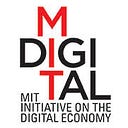Hybrid Work is Here to Stay; Now What?
Debates persist about how to make hybrid work arrangements work. Here are 5 ways to adapt.
By Irving Wladawsky-Berger
More than two years into the COVID pandemic, office life — and the workforce — will never be the same.
“The people returning to the office are not the same as those who left in March 2020,” wrote Jared Spataro, Microsoft Corporate VP for Modern Work, in a recent Harvard Business Review (HBR) article, 5 Key Trends Leaders Need to Understand to Get Hybrid Right.
The article summarized the findings of Microsoft’s 2022 Work Trend Index, a report based on various sources of information, including a survey of 31,000 people in 31 countries, labor trends from LinkedIn, and trillions of signals from Microsoft 365 suite of productivity apps.
(In a recent MIT IDE study, researchers estimate that about half of the U.S. workforce currently works remotely at least some days each week.)
“The data shows that the past two years left an indelible mark on the psyche of workers, altering their expectations and fundamentally shifting the way work gets done,” said Spataro, as well as where it gets done — remotely or in person. “This is a pivotal moment, where leadership matters more than ever.
Those who embrace a new mindset and shift cultural norms will best position their people and their business for long-term success.
Adapting to the influx of change in this business environment is no easy feat,” however.
Even businesses that held out for all in-person work, are finding that model untenable. “After many false starts, organizations are finally making the shift into a true hybrid work model. Like every other turning point over the past two years, there’s no shortage of perspectives on what this next phase will look like.” However, there’s no going back to the way work once was. Adapting to the many changes in this business environment is a challenge now facing every leader.
To navigate the transition to hybrid work, leaders need to understand five key trends.
- Employees have different priorities when it comes to work and life.
“When it comes to work, employees are redefining their worth it equation: what they want from work and what they’re willing to give in return,” wrote Spataro. The past two years have reshaped their priorities, drawing a clear line between what’s most important — family, health, personal well-being — and what’s not. The corner office may no longer be what people value most.
Nearly half, (47%) of respondents said that they’re now more likely to put family and personal life over work than before the pandemic;
and 53% said that they’re more likely to prioritize health and well-being, particularly parents (55%) and women (56%).
These changing expectations may help explain the so-called Great Reshuffle where18% of all respondents left their job in the past 12 months, citing personal well-being or mental health reasons. Another 24% cited work-life balance (24%), while risk of getting COVID (21%), lack of confidence in senior management (21%), and lack of flexibility in work hours or location (21%) were named the top five reasons for quitting. Illustrating the shift in priorities is the fact that lack of promotions and raises was further down the list, named by only 19% of respondents.
“When asked what they wanted from a new employer, topping the list was positive culture (46%), with well-being benefits (42%), a sense of purpose and meaning (40%), flexible hours (38%), and more than two weeks’ vacation time (35%), not far behind.”
2. Managers feel wedged between leadership and employee expectations.
But it’s not just employees tipping the scales against traditional models. Managers are feeling stuck between these new employee expectations and the leadership of their companies. Fully 54% of managers feel that their leadership is out of touch with the changes in employee priorities over the past two years.
For example, 50% of leaders plan to require employees to return to the office full time, while 52% of employees expect to shift to hybrid or remote work in the year ahead. Other studies have similarly concluded that hybrid work will stick long after the pandemic ends, and project that about 20% of full workdays for American workers will be from home, about four times the pre-COVID level.
Desires to work from home part of the week are pervasive across groups regardless of age, education, gender, earnings, and family circumstances.
The Microsoft report noted that remote jobs on LinkedIn attracted nearly three times more applications than on-site positions. And according to this 2021 survey, over 40% of respondents said that they would quit or start looking for a new job if forced to return to the office full time, and 56% said that they would be more likely to consider a new job that allowed them to work from home part of the week.
“With more than two years of remote or hybrid work under their belt, employees feel they haven’t just survived flexible work — they’ve gotten pretty good at it,” wrote Spataro. “Eighty percent believe their productivity has stayed the same or improved, in stark contrast to 54% of business leaders who fear their team has been less productive since moving to remote or hybrid. With 74% of managers saying they don’t have the influence or resources they need to make changes on behalf of their team, there’s a clear gap that needs to be addressed.”
3. Leaders need to make the office worth the commute
What’s the role of the office in the post-pandemic economy? For white collar workers, going to work was equivalent to going to an office. But, that’s no longer the case. As organizations now try to encourage employees to come back the office, they must explain why they’re doing so.
Over a third (38%) of respondents to the Microsoft survey said that “their biggest challenge is knowing when and why to come into the office,” but relatively few companies (28%) have clearly defined the new norms for hybrid work. And, while over 40% of hybrid or remote employees said that they don’t feel included in meetings,
only 27% of companies have defined the necessary etiquette for hybrid meetings to ensure that everyone feels included and engaged.
“To make the office worth the commute and to create an engaging experience for everyone, leaders need to be intentional about the who, where, and why of in-person gathering and set new meeting etiquette that gives everyone a seat at the table.”
4. Flexible work doesn’t have to mean “always on”
Part of the reason for the increased productivity over the past two years is that people have been working more than ever, including meetings, chats, longer hours and weekend work. Microsoft Team data show a rise in the length of the workday for the average user (13%), more after-hours (28%) and weekend (14%) work, more time spent in meetings (252%), and an increase in the number of weekly meetings (153%) and chats (32%).
At the same time, people have reshaped their working day to better meet their needs, such as meetings starting later on Monday and finishing earlier on Fridays, fewer meetings at lunchtime, and a 10% increase in out-of-office time to attend to personal matters.
“While these are promising signs of individual efforts to maintain balance, to make flexible work sustainable, teams must set new norms that establish boundaries so one person’s flexibility doesn’t become another’s always on.”
5. Rebuilding social capital looks different in a hybrid world
One of the most important consequences of remote and hybrid work has been their impact on workplace relationships. The data show that 58% of hybrid employees were able to maintain strong team bonds, about 50% of those that are fully remote were able to do so, and 42% said that they maintained good relationships outside their immediate teams.
Forty-three percent of leaders said that relationship-building is the greatest challenge in hybrid and remote work.
This is a particular problem for new employees, who stand out as a group in need of stronger workplace relationships, with 56% saying that they will likely consider changing jobs in the year ahead.
“Organizations cannot see a return to the office as the only way to rebuild the social capital we’ve lost in the past two years. By creating the time and space for relationship building to happen and encouraging teams (especially remote and new employees) to prioritize networking and in-person connection, employees can make up lost ground.”
“These past two years have made a lasting imprint that will be felt for years to come,” wrote Spataro in conclusion. “As leaders navigate the ripple effects, a willingness to adapt and embrace new ways of thinking and working will be a competitive advantage that sets thriving organizations at the head of the pack.”
This blog first appeared here May 20, 2022.

